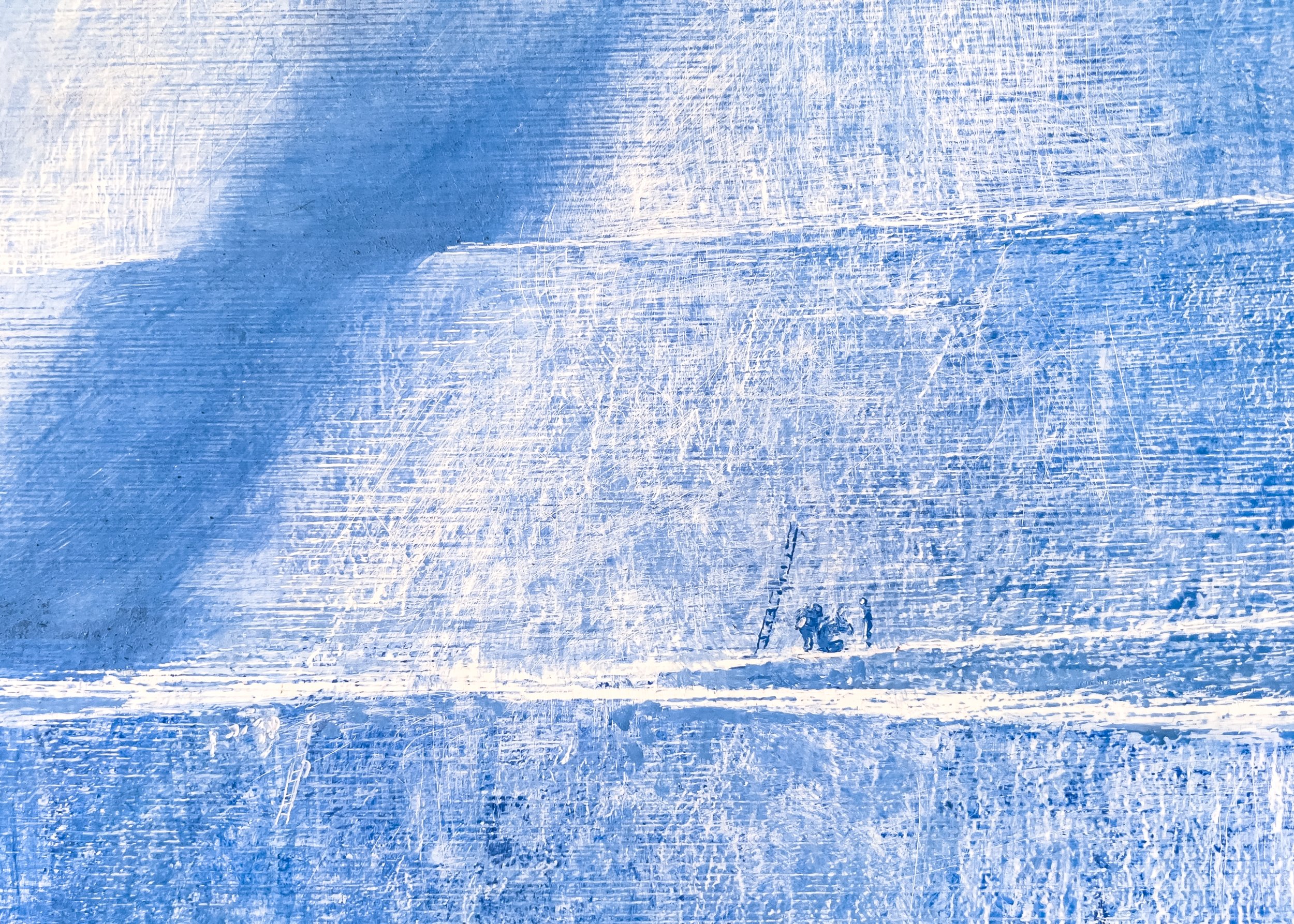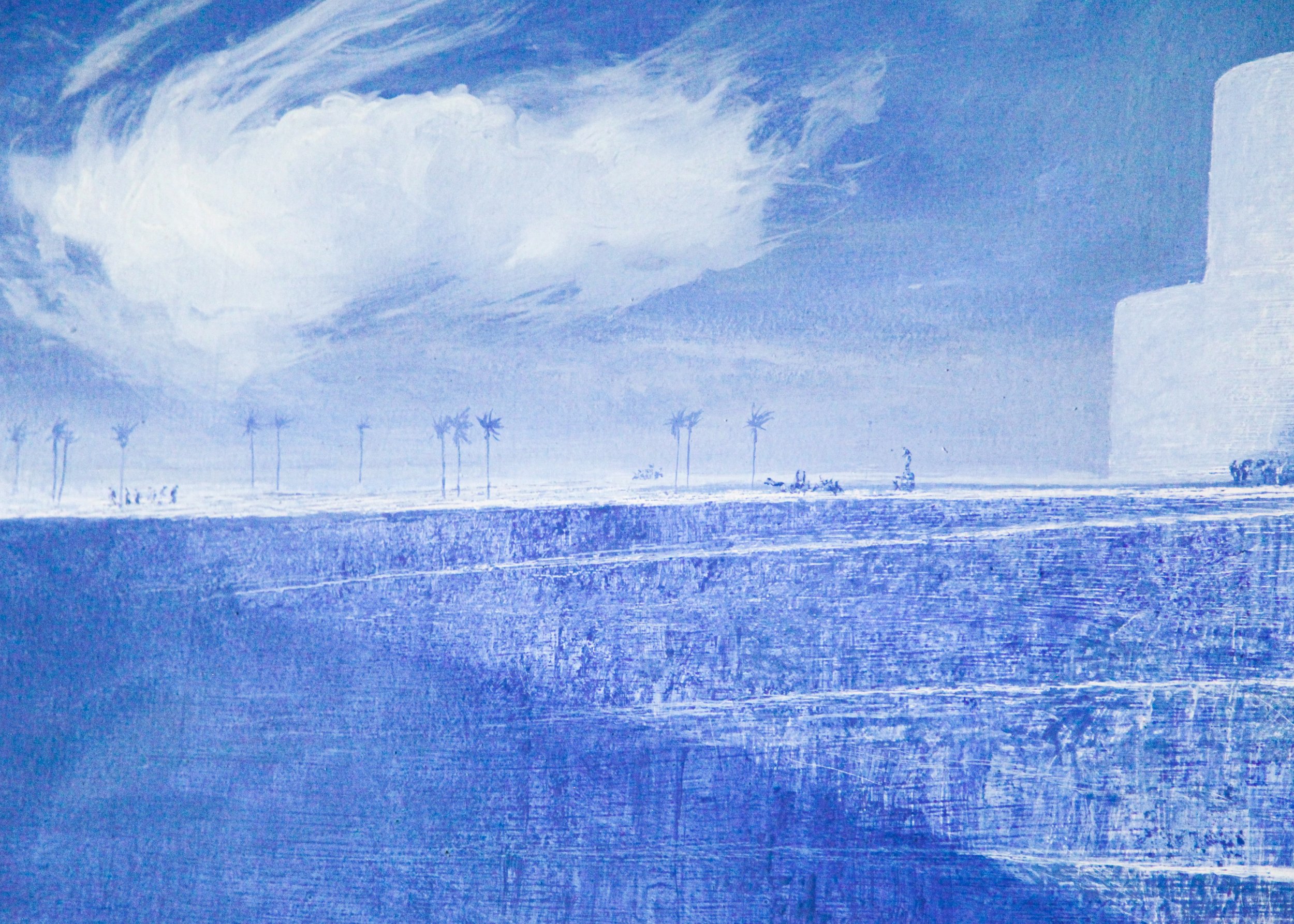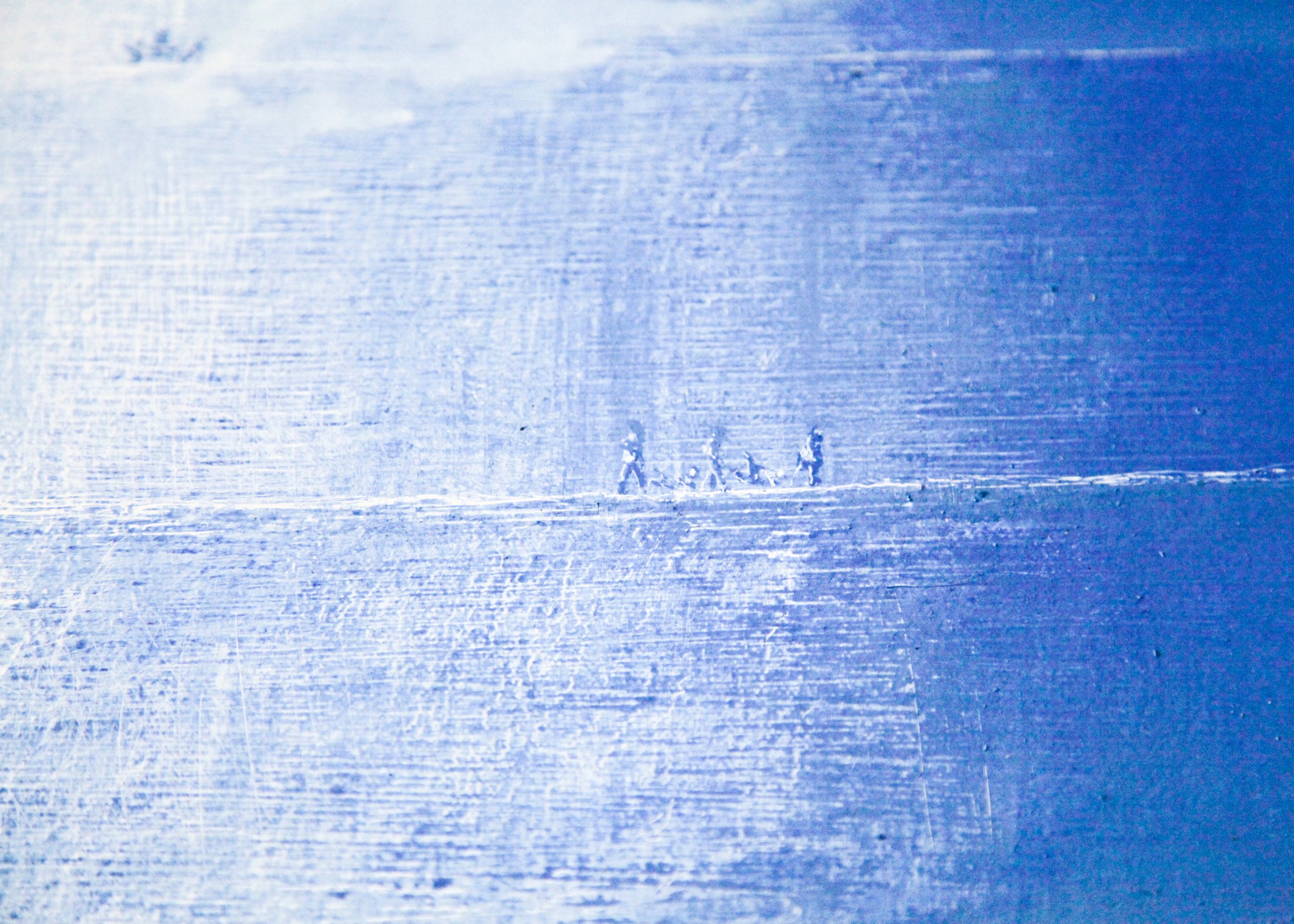Mark Tansey
Study for Pit and Pile, 1998
Oil on canvas
26 x 54 inches
66 x 137.2 cm
Signed and dated ‘Mark Tansey, 98’ on the verso
ABOUT THE WORK
Mark Tansey’s Study for Pit and Pile, 1998, depicts both a deconstruction and construction that is concurrently ironic, magical, and surreal. The painting invites a conversation with its viewer about form, space, relationality, and function. Overarching questions are inherent in the vast horizontal image, not least of which is its subject matter. Like an architectural blueprint or technical drawing that details the necessary aspects of the design and construction of a project, this monochromatic painting is the basis or plan. Did Tansey invent plans for a major earthwork, or a modern Tower of Babel or Babylon?
In 1563, Pieter Bruegel the Elder painted his now world-famous paintings—The (Great) Tower of Babel and The (Little) Tower of Babel. The tower was built, according to legend as a monument to unite humanity. “Then they said, 'Come, let us build ourselves a city, and a tower with its top in the heavens, and let us make a name for ourselves; otherwise, we shall be scattered abroad upon the face of the whole earth.’” (Genesis 11:4). Like Bruegel’s tower, Tansey’s building is also an ascending spiral. Tansey’s tower is cut off on the right and reaches beyond the picture plane suggesting a connection been heaven and earth, or even heaven and the “pit” of hell. By design, the artist’s references are open ended and left undefined.
While blueprints are created using a cyanotype, they are the shared “document,” the essential conversation piece, the source of answers. Here we have conceptual ideas, ones that link the natural world with humanity, ones that are boldly physical yet metaphorical at the same time. They ask fundamental questions about art, and by extension the very nature of creating illusions that teeter between the fantastic and the pseudo-imaginable.
On the one hand, Study for Pit and Pile is precisely that, a conceptual two-dimensional representation of a pit and a pile. These well chiseled forms are the yin and yang. In Tansey’s painting the deconstruction of one space literally gives birth to the other—the pile. The pile in the form of a circular ziggurat in shape mirrors the pit. While excavation and construction are clearly implied there is no other evidence of these activities. Rather a few trees, a grove of palms, and miniature figures dot the serene landscape. They testify to the enormity of the operation so elegantly defined by nuances of blue and the reflection of clouds. Shade further reinforces volumes and mass within the landscape that is arguably both idyllic and austere, uninhabitable, and otherworldly.
Like the elaborate geometric crop circles that appear in the U.K., Tansey’s painting is designed to be enigmatic. Study for Pit and Pile is the type of painting that you can return to endlessly and see new and anew. It is a painting about painting. It is a painting in search of a director, to reference Luigi Pirandello’s 1921 play Six Characters in Search of an Author, an absurdist meta-theatric play. Both draw attention to the art of performance and its creation. Tansey’s art is about art; its referential and art historical but the artist strives to make heady and contemplative work that defies logic in some ways. Rather this extraordinary painting brings us to the magical and inspirational, a new place where we can linger enjoying art by an artist whose work is infinitely admirable.
– Annemarie Sawkins, PhD









